How Does Porsche’s Ultra-Expensive PCCB Option Really Perform?
公開日:2020.01.12

*This article was originally published on January 12, 2020, but has been updated with new information and republished on February 18, 2020.*
This time, my husband has written about his firsthand experience owning a GT3 equipped with Porsche’s ultra-expensive PCCB option. Please enjoy his insights below.
When it comes to a high-end sports car like a Porsche, you can choose from an overwhelming array of options beyond just the base vehicle. Of course, domestic cars also offer options, but nothing compares to this. The range of choices is vast, and every single one is very costly. As a result, if you pick options normally, the cost of options alone can quickly match the price of a domestic compact car.
What is PCCB (Porsche Ceramic Composite Brake)?
Among these options, there is one that stands out for its extreme price. That is PCCB (Porsche Ceramic Composite Brake). Depending on the model, this option alone costs roughly between 1.4 million and 1.6 million yen. It’s often called “Porsche Carbon Composite Brake,” but the accurate term is “Ceramic Composite.”
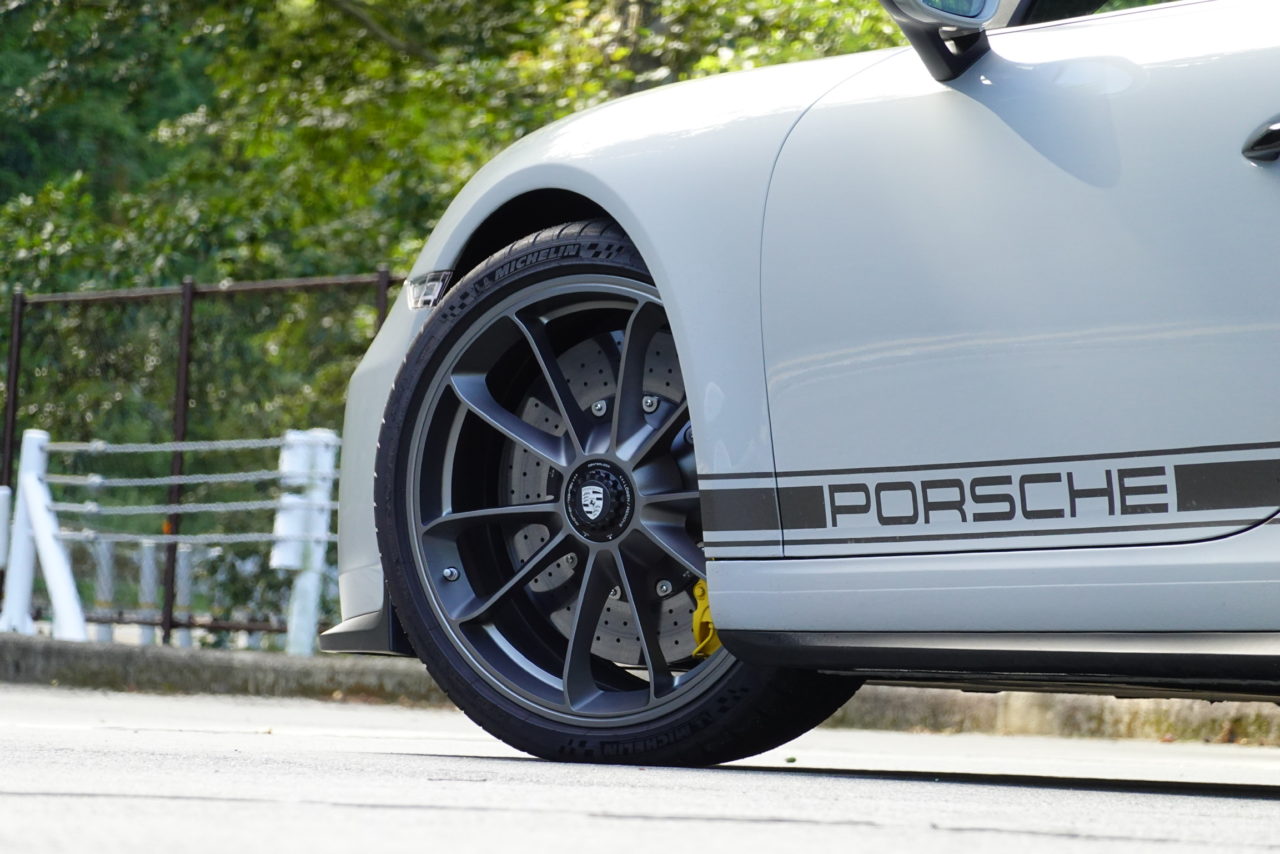
Why is it so expensive? Because it is made from a composite material of ceramic and carbon that can withstand temperatures up to 1000°C, and it is manufactured through a very labor-intensive process.
Its key features include powerful braking performance and being ultra-lightweight—less than half the weight of cast iron discs—which improves ride comfort and handling. It is also said to have excellent durability. When first introduced around 2000–2001, it was claimed to last six times longer than cast iron discs, with discs lasting up to 300,000 km. However, recent official Porsche documents no longer mention durability.
Choosing PCCB as an Option on the GT3
I had been curious about Porsche models equipped with PCCB for a while, but the price always made me hesitate to select it as an option. However, when purchasing this GT3, I decided to take the plunge and go for it.
The price? A staggering 1,668,000 yen. That’s enough to buy an entire car on its own…
How Does PCCB Feel?
First off, when it comes to braking power, it’s incredibly strong. Honestly, anyone driving can immediately feel the difference. Our Boxster GTS and Panamera Turbo have standard cast iron brakes, which are already very effective, but PCCB is noticeably stronger.
PCCB offers a very crisp feel right from the initial pedal press. However, it’s not like the “boosted” feel you often get with Japanese compact cars where the brakes grab hard only at first. It brakes linearly in response to pedal pressure. Cast iron brakes feel similar, but PCCB requires less pedal travel.
For example, when casually driving winding roads and entering corners a bit aggressively, just lightly pressing the brake is enough to slow down properly. It feels like pressing only about 30% of the pedal is sufficient for solid deceleration. Passengers often comment, “The brakes work amazingly well!” but in reality, I’m not even pressing halfway down.
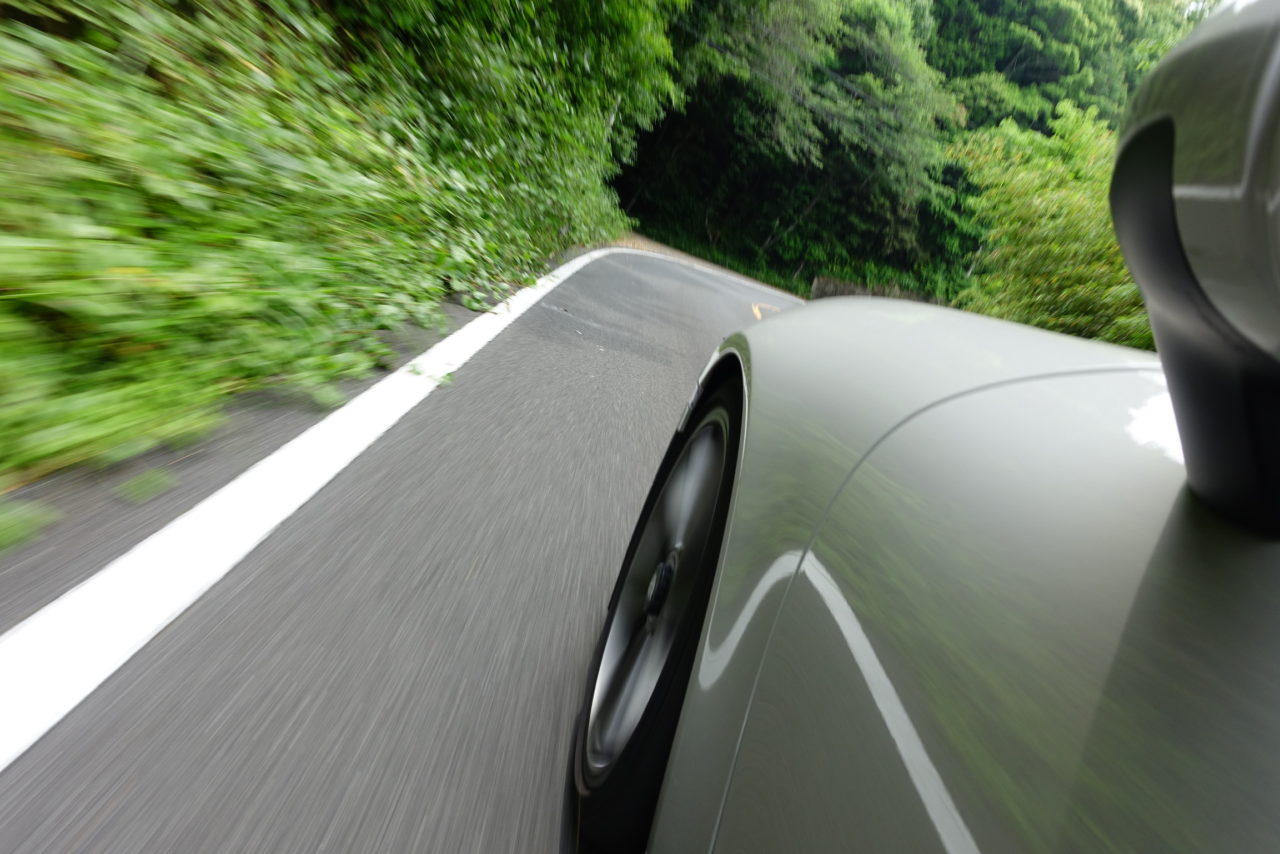
It’s by no means difficult to use in city driving. There’s a common belief that ceramic carbon brakes don’t work well until warmed up, but at least with the brakes on this GT3, I can’t tell any difference. If you really pay attention, there might be a slight difference, but it’s so natural that you usually don’t notice it at all.
By the way, the McLaren 650S I previously owned also had ceramic carbon brakes, but those felt a bit more sensitive to temperature—meaning they were harder to modulate when cold (not that they didn’t work). Also, PCCB seems to have evolved over the years, so the feel and performance of the current generation likely differ from those on the 996 or 997 models.
How is the Ride Quality with PCCB?
PCCB is said to be over 50% lighter than cast iron discs. This significantly reduces unsprung weight, which is said to positively affect ride comfort and handling.
However, since I haven’t compared the same model with and without PCCB directly, I can’t say for sure. But comparing the Boxster GTS with cast iron discs and the GT3 with PCCB, I do feel a sense of lighter, more agile suspension.
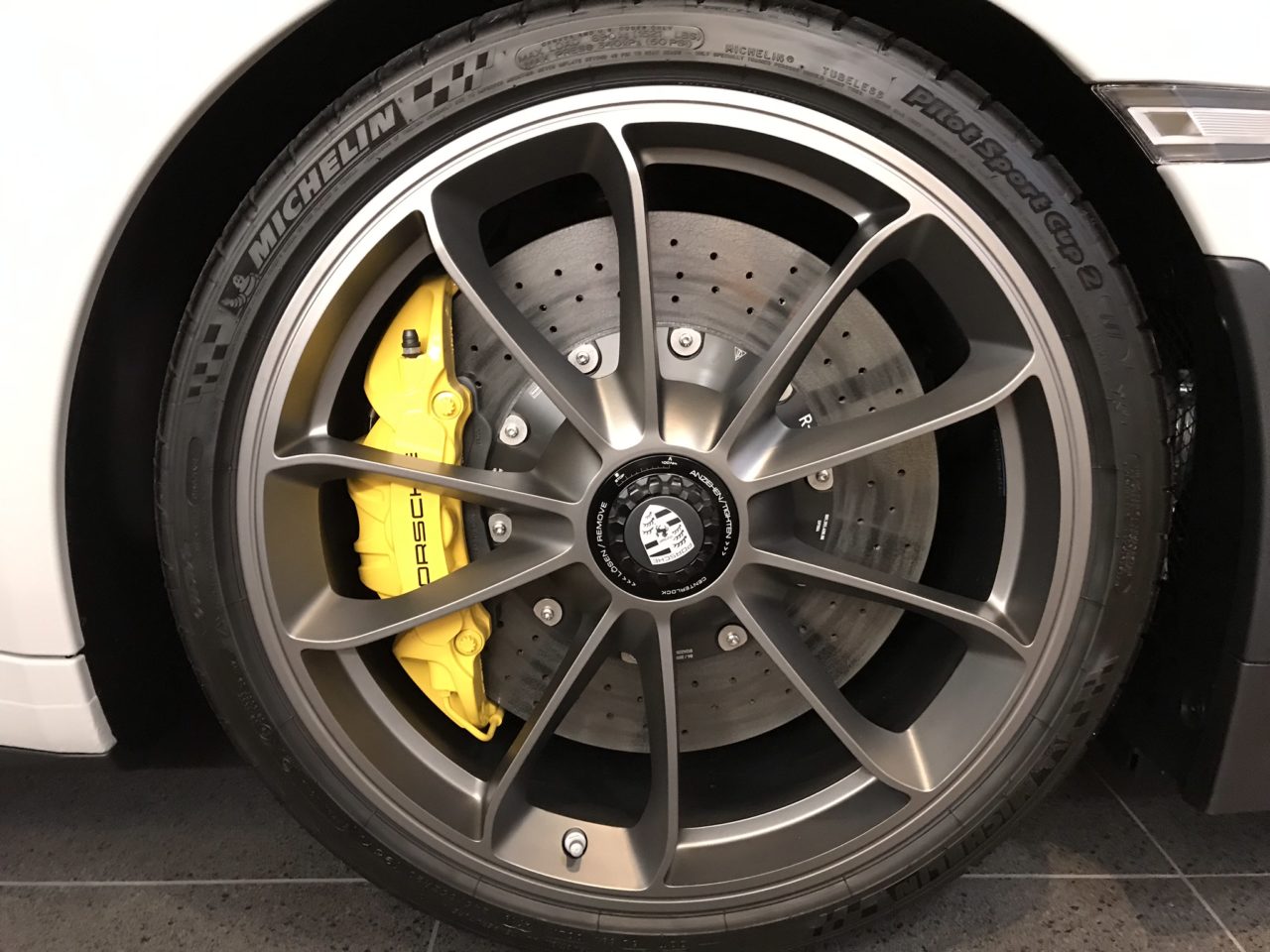
Incidentally, a friend of mine recently upgraded from a 991.2 GT3 with cast iron brakes to the same model with PCCB. According to him, it’s “completely different.”
Specifically, “the steering feels noticeably lighter, like having Power Steering Plus installed.” Also, “you can clearly feel how it absorbs shocks quickly even in city driving, making the ride more comfortable.” I thought this might be useful to share.
How Does PCCB Perform on the Track?
Recently, I took the GT3 to Suzuka Circuit for some laps. I plan to write a detailed review later, but for now, I want to share my impressions of the brakes.
Compared to Fuji, Suzuka doesn’t demand as harsh braking, but it’s still a circuit that requires braking you rarely experience on public roads.
For example, at the first Degner corner at Suzuka, you brake while trying to carry as much speed as possible into the turn. Sometimes when I get tired, I miss the braking point and almost enter the corner too fast. In those moments, when I try to brake harder, the Boxster GTS’s cast iron brakes can’t slow down enough, and the car slightly rides onto the outer green zone.
However, with the GT3’s PCCB, even if I think, “Oh no, I’m a bit late…” and press harder, it still decelerates firmly without issue. It brakes better than my brain expects, which gives me great peace of mind.
Of course, as an amateur driver, I didn’t notice any issues with fade resistance, pedal feel, or judder.
After two 30-minute sessions, I checked the PCCB and found nothing unusual. I had heard that “PCCB wears out quickly when abused on circuits, so it won’t last anywhere near 300,000 km,” so I was a bit worried. But for an amateur like me who drives gently on track, it seems you don’t need to be overly concerned.
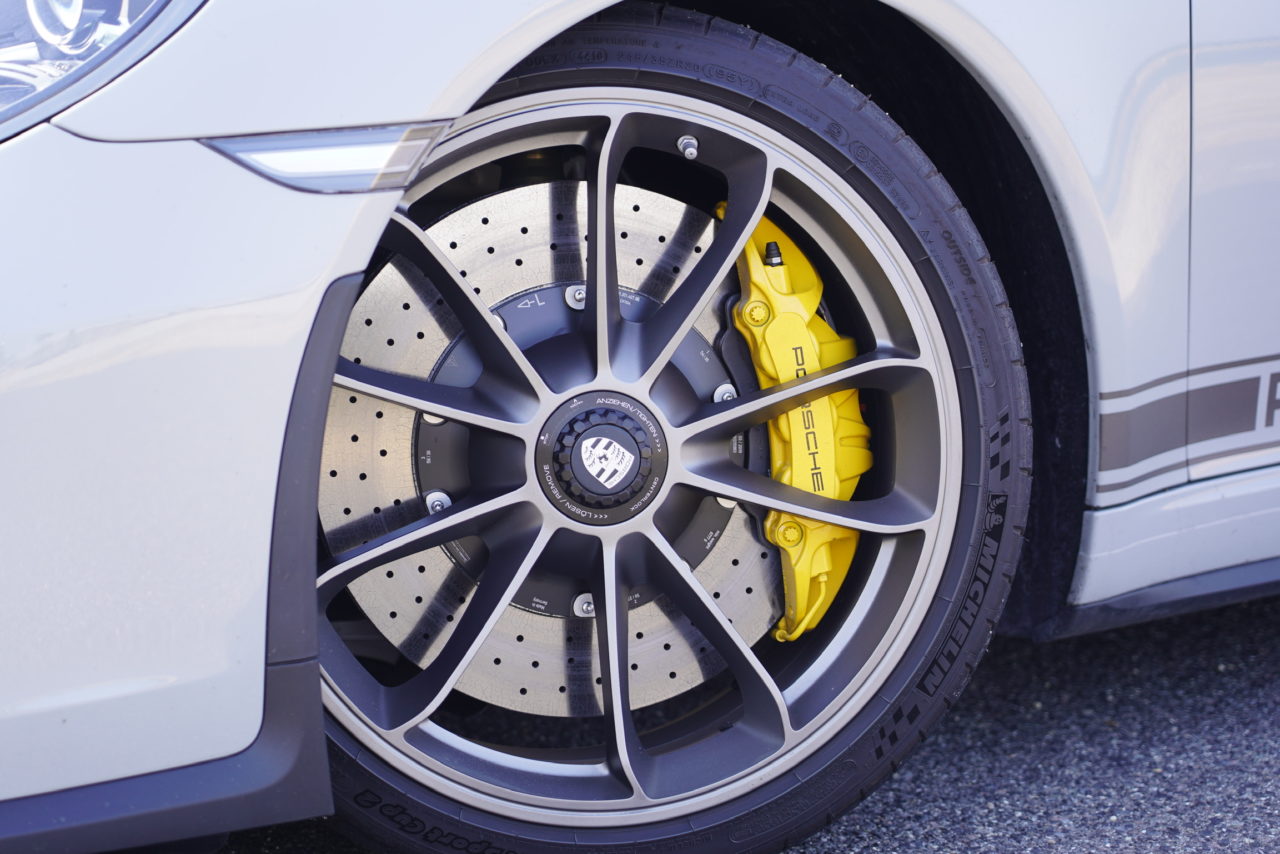
PCCB after circuit use
When I asked the dealer about durability at the time of ordering, they said, “Some customers do take their cars to the track, but I’ve never heard of anyone having to replace their PCCB.” Of course, many owners sell their cars before the brakes wear out, so this isn’t definitive, but it seems they aren’t something you replace frequently.
*Update on 2020/2/18:*
I recently had the chance to see a 991.1 GT3 RS with PCCB owned by someone who uses the car exclusively for track days, only driving on public roads to and from the circuit. The car had about 25,000 km on it. The PCCB discs looked almost pristine, and the pads still had plenty of life left. The owner said, “I also drive a GT4 with regular cast iron brakes, and I’ve replaced pads and discs on that car many times. PCCB lasts way longer.”
Does PCCB Really Produce No Brake Dust?
In short, it produces astonishingly little brake dust—practically none at all. If your wheels get dirty, it’s usually just road dust or grime lightly settling on them.
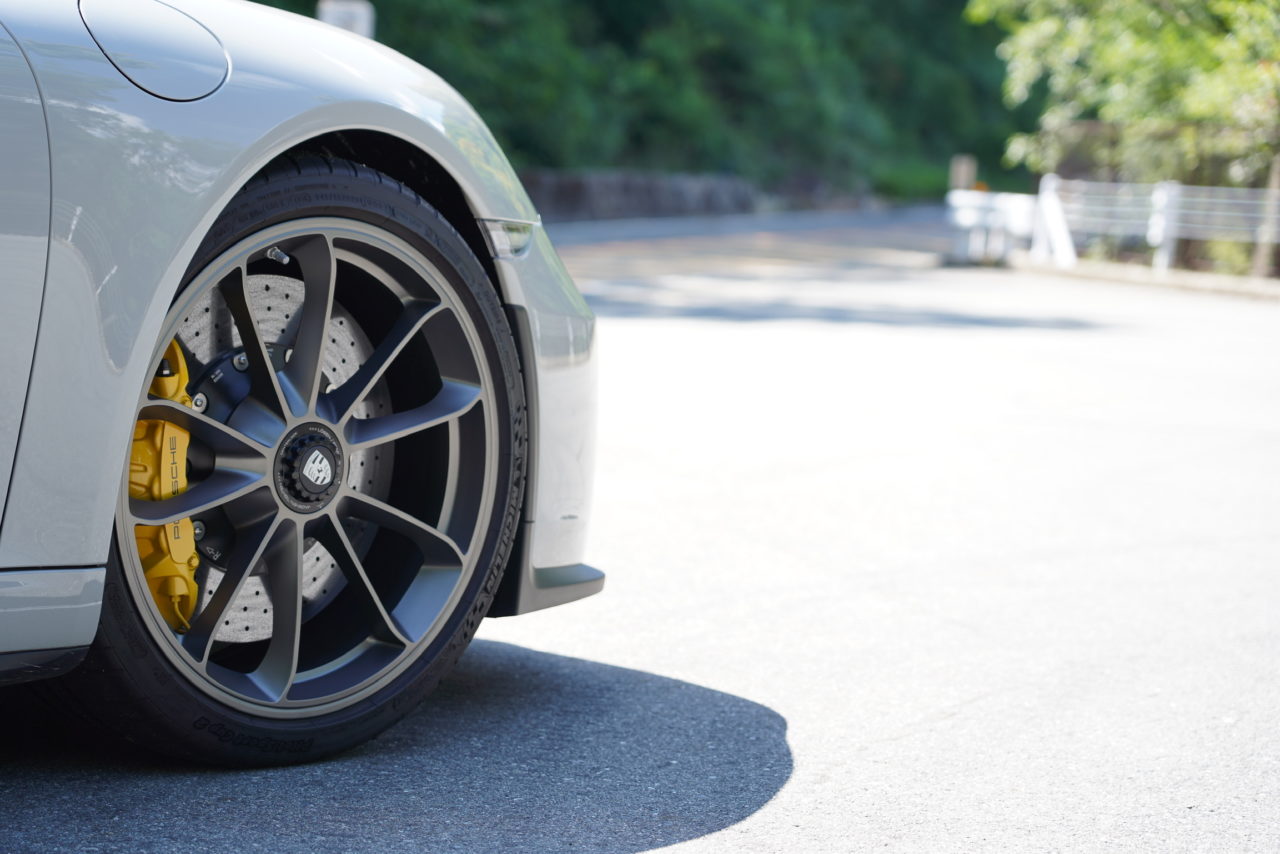
Wheels after over 1000 km without washing
I usually wash my own car, but since purchasing, after about 6,000 km, I still haven’t properly washed the wheels. Of course, the dealer washes the car during inspections, so they do get cleaned occasionally, but I can confidently say that after just 1,000 km or so, no brake dust accumulates.
If you want brakes that don’t dirty your wheels, PCCB is highly recommended. Recently, Porsche’s PSCB (Porsche Surface Coated Brake), available on models like the Cayenne, might also be a good choice.
| Next page → What are the downsides of PCCB? |
このブログが気に入ったらフォローしてね!


Comment ( 0 )
Trackbacks are closed.
No comments yet.